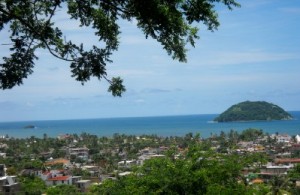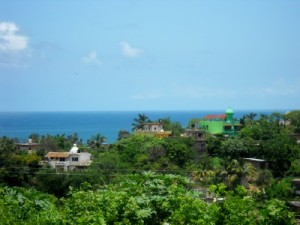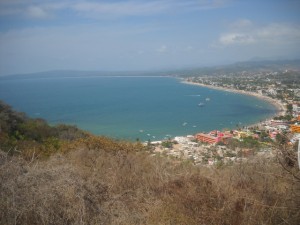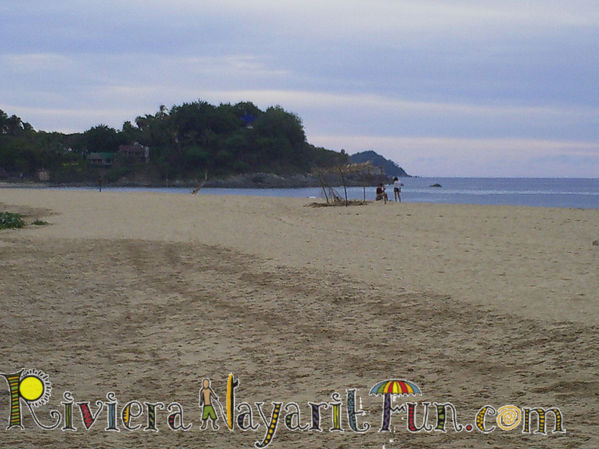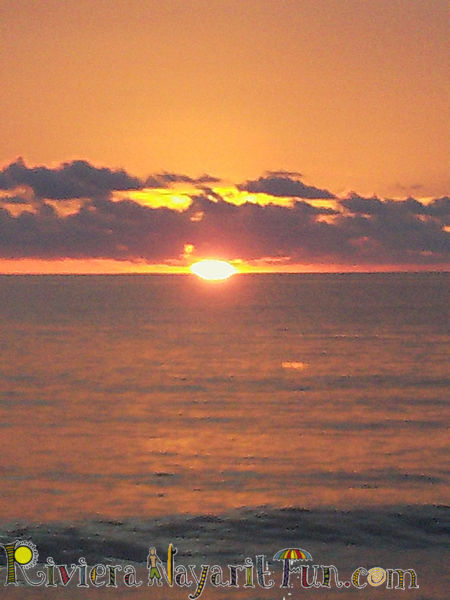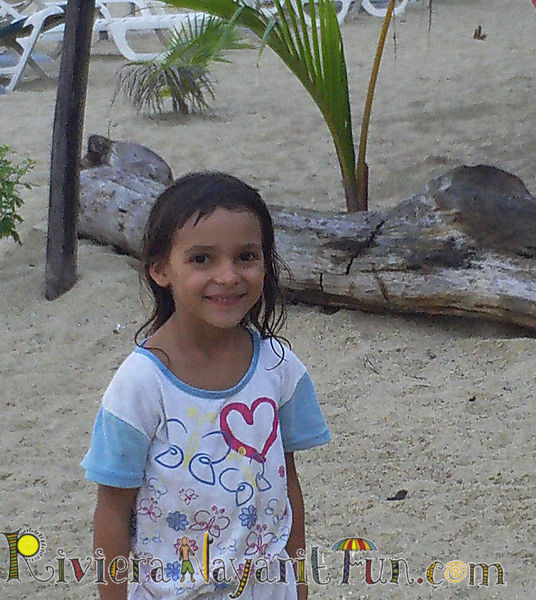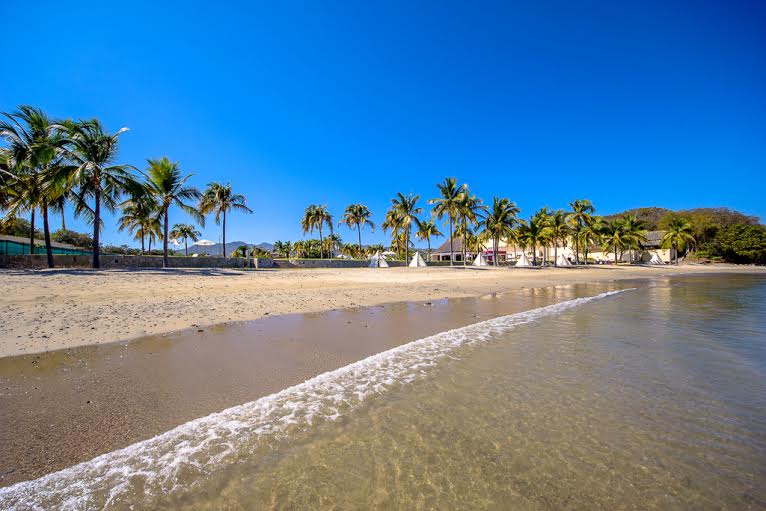Beachfront Restaurant for Lunch
I had been working in Sayulita on the Riviera Nayarit in Mexico all morning, and called my girlfriend to see if she wanted to have some lunch. It was around 1:00 in the afternoon, and my girlfriend and I were both really hungry.There are a lot of good and different restaurants, and plenty of great taco places, however, I wanted to try somewhere that I had not eaten before.  I was looking for some fresh seafood. I knew of the Captain Cook Restaurant, and that it was located right on the beach, and had wanted to try their food. I really love eating at beachfront restaurants.
I was looking for some fresh seafood. I knew of the Captain Cook Restaurant, and that it was located right on the beach, and had wanted to try their food. I really love eating at beachfront restaurants.
Enjoying Seafood For Lunch
Captain Cook has a lot to choose from on their menu, specializing in Seafood like mussels in white wine sauce and every fish you can think of! They have the usual Mexican cuisine of course, like tacos and burritos and cheviche, but they also have great appetizers like crab cheese puffs, stuffed Portabello mushrooms and spicy wings. A large variety of salads and mention yummy looking burgers as I saw one the other day when discovering the restaurant.
I decided on the Red Snapper, which you can order a variety of sizes and weight, which are in kilos. It’s fun because it comes on a large platter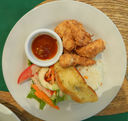 that you can share with friends. I also ordered a mixed seafood cocktail, which had octopus, shrimp and scallops. My friend ordered the coconut shrimp. We both had yummy lemonade. It was still a little early for us to be drinking, especially on a work day, however they have a full bar with a happy bartender, and a good menu of drinks.
that you can share with friends. I also ordered a mixed seafood cocktail, which had octopus, shrimp and scallops. My friend ordered the coconut shrimp. We both had yummy lemonade. It was still a little early for us to be drinking, especially on a work day, however they have a full bar with a happy bartender, and a good menu of drinks.
A nice thing about the menu at Captain Cook Restaurant is that it is written in English and Spanish! So, if you speak English, and are a bit rusty on your Spanish, its a wonderful thing! Click on a picture to go to the Riviera Nayarit Picture Gallery.
We ordered lunch, and while we sipped on our lemonades our server brought us some chips, crackers for the seafood cocktail and salsa. They wait staff was very friendly, and spoke good English as well. They were professional and polite.
Our food arrived in an appropriate amount of time, and it looked delicious! The Red Snapper looked cooked to perfection,and my friends shrimp were big and plump. They both came with salad and my Red Snapper came with rice as well.The waiter also brought out some fresh tortillas.
It was fun sitting out on the beach under an umbrella watching the surfers. They also have plenty of room inside the restaurant with nice wooden tables and chairs that look out over the beach and ocean.
inside the restaurant with nice wooden tables and chairs that look out over the beach and ocean.
I tried my friends coconut shrimp, which happens to be one of my favorite way to eat shrimp, and it was delicious and not  over cooked, and the oil tasted clean and fresh.
over cooked, and the oil tasted clean and fresh.
We took our time eating and chatting. It was a delightful lunch filled with yummy seafood flavor, and I ate every last bite. We left happy with our stomachs full.
Whether you are on your Mexico vacation, or if you live in the neighborhood, come enjoy the beachfront restaurant Captain Cook and enjoy some lunch or dinner with a seafood flair on the Riviera Nayarit in Sayulita Mexico.


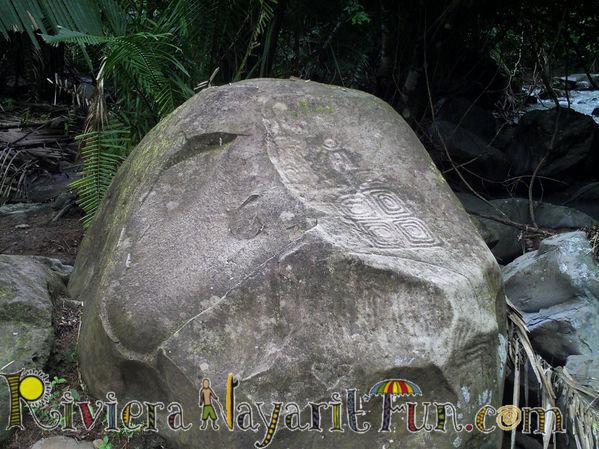
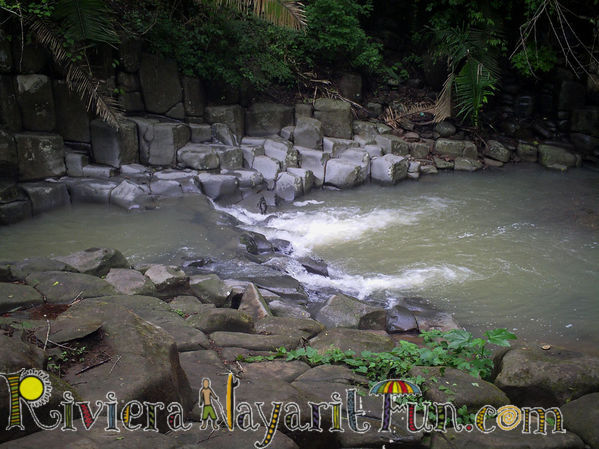
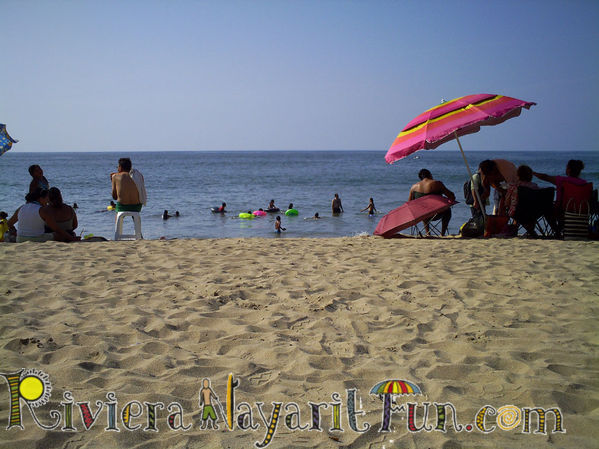

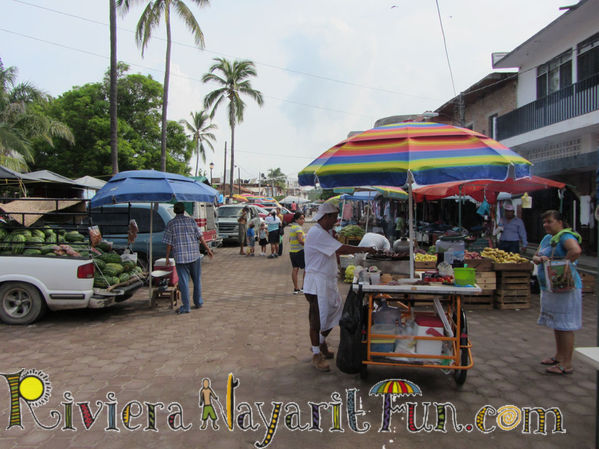
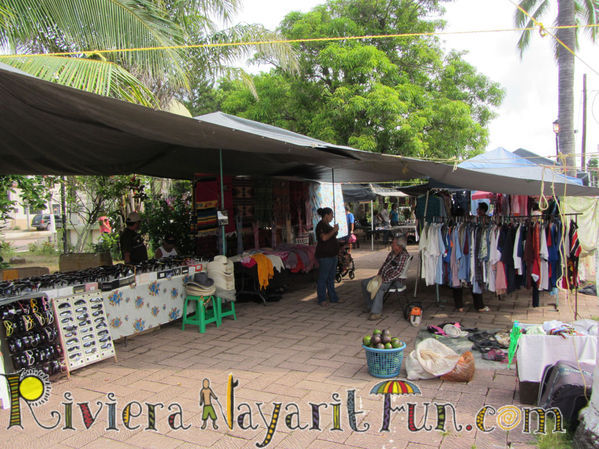
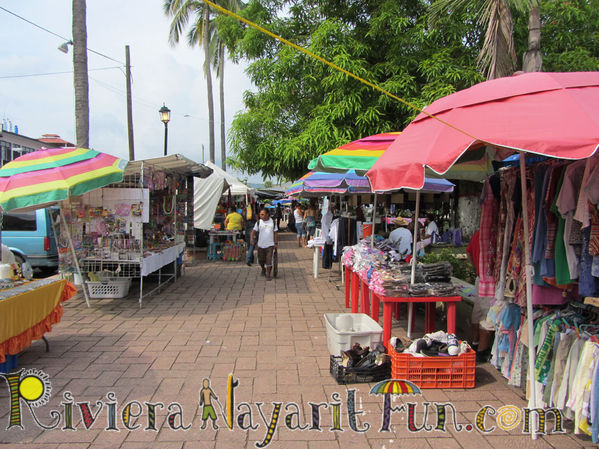
 him wearing a black patch over one eye with a yellow sash around his waist and a long sword at his side. Could he be a pirate? This man of the sea is an original with 25 years’ experience sailing the ocean blue.
him wearing a black patch over one eye with a yellow sash around his waist and a long sword at his side. Could he be a pirate? This man of the sea is an original with 25 years’ experience sailing the ocean blue. on air. Passing more contemporary boats in the marina on our way out to sea, feeling the soft sway of the boat and smelling the fresh ocean air, we sense the history of this sailing trimaran and realize we have stepped aboard a legend. Before long, the marina is behind us and the wide Pacific Ocean draws us in.
on air. Passing more contemporary boats in the marina on our way out to sea, feeling the soft sway of the boat and smelling the fresh ocean air, we sense the history of this sailing trimaran and realize we have stepped aboard a legend. Before long, the marina is behind us and the wide Pacific Ocean draws us in. and the rolling hills of tropical rainforests in varying shades of green peppered by rock barriers that extend into the ocean.
and the rolling hills of tropical rainforests in varying shades of green peppered by rock barriers that extend into the ocean.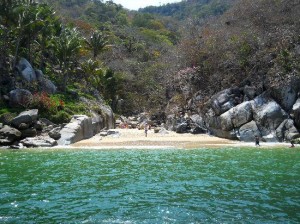
 about her death and are quiet for a time as we journey back to the marina. The ride is calm and smooth as the sun sets on a lovely Nayarit day. Hues of red, orange, yellow, and purple fade into gray as we say good-bye – for now.
about her death and are quiet for a time as we journey back to the marina. The ride is calm and smooth as the sun sets on a lovely Nayarit day. Hues of red, orange, yellow, and purple fade into gray as we say good-bye – for now.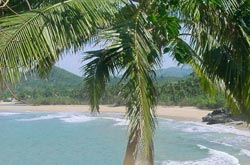
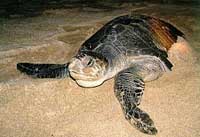
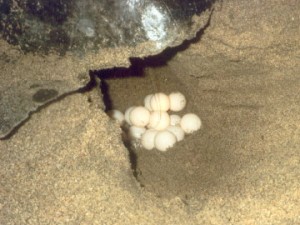
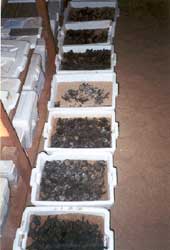
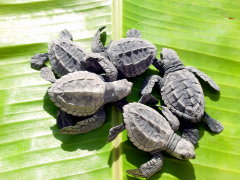
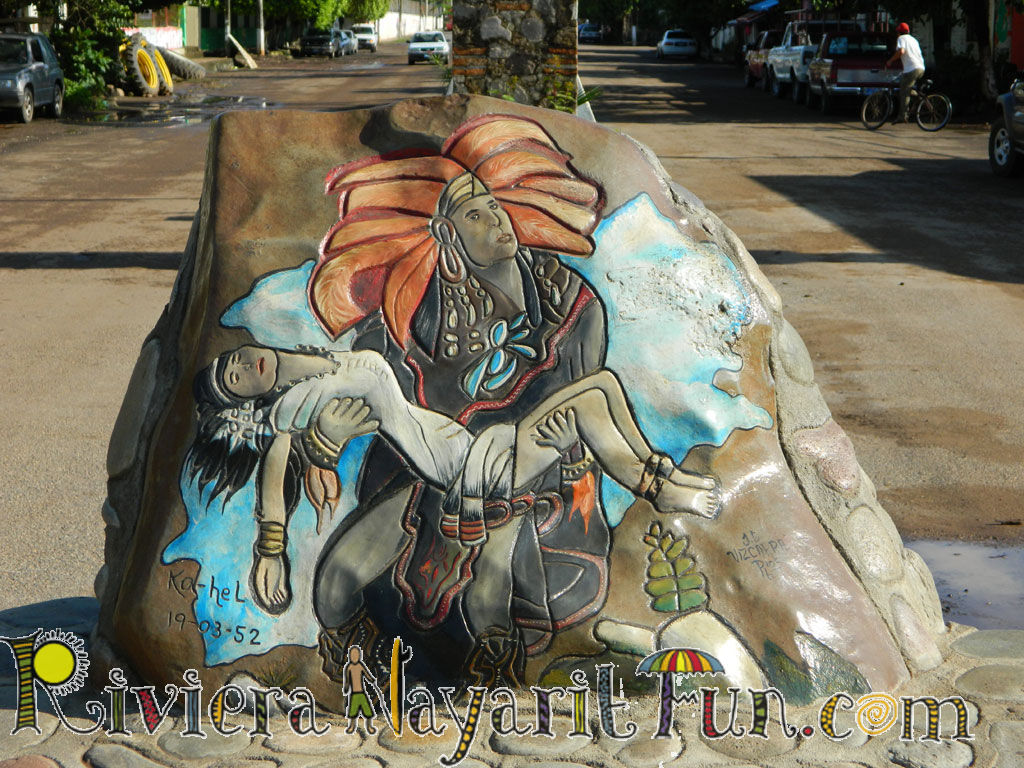 very passionate about love and life! We went into town and down to the town square. Every pueblo has a town square. And in the town square is where you will find life in the town.
very passionate about love and life! We went into town and down to the town square. Every pueblo has a town square. And in the town square is where you will find life in the town.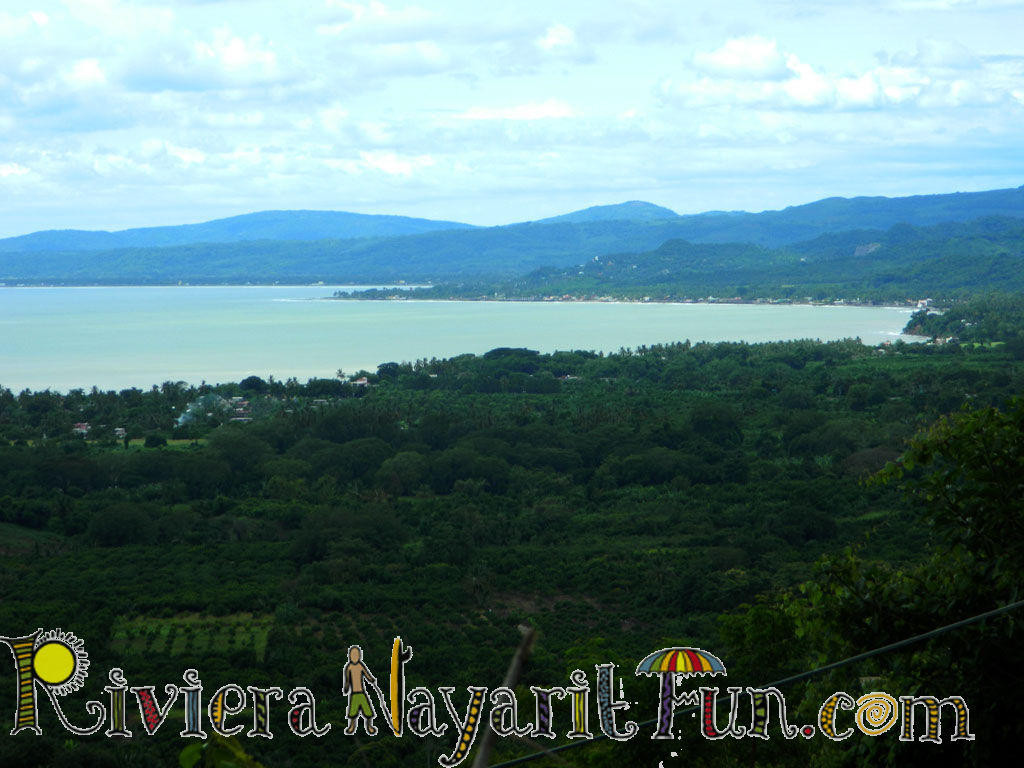 Driving is a fun way to get around Mexico. There are so many small towns (pueblos) to see and interesting culture to absorb. Some of the streets get over grown due to the heavy rain season or flooded. Everything grows so fast here in Mexico.
Driving is a fun way to get around Mexico. There are so many small towns (pueblos) to see and interesting culture to absorb. Some of the streets get over grown due to the heavy rain season or flooded. Everything grows so fast here in Mexico. and jewelry shops. Conor found a really cool Mayan vortex type of tee shirt, and I purchased a really cool pair of beaded yellow daisy earrings. We walked around town for a while. The market was busy and there were several vendors selling their goods like
and jewelry shops. Conor found a really cool Mayan vortex type of tee shirt, and I purchased a really cool pair of beaded yellow daisy earrings. We walked around town for a while. The market was busy and there were several vendors selling their goods like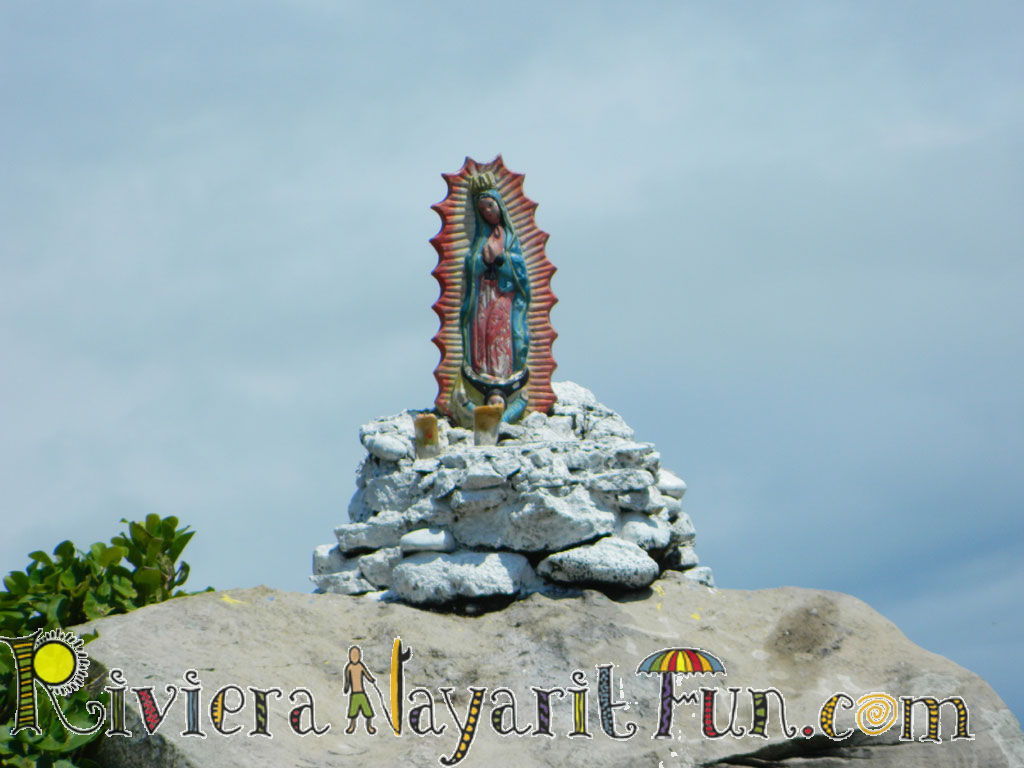 waves to swim in. The beach was flat and the water was warm. We had a blast.
waves to swim in. The beach was flat and the water was warm. We had a blast.